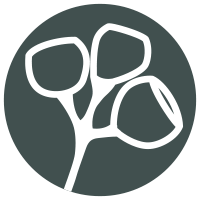Yellow Stringybark
 Yellow stringybark is indigenous to the coastal plains and ranges
Yellow stringybark is indigenous to the coastal plains and ranges
of south eastern Australia (Gippsland to Newcastle).
Where does it grow best?
Yellow stringybark performs well across a range of sites. Best performance is found on sites with rainfall of at least 600 mm year- 1 and deep, well-drained sandy loam or clay loam soils. Yellow stringybark is tolerant of mild frost and infertile soils.
What does it look like?
Yellow stringybark is a very straight tree with light branching and brown stringy bark on the trunk and major branches. The smaller branches have creamy yellow gum bark and glossy green leaves.
What sort of wood does it produce?
The wood from yellow stringybark is highly desirable. Its colour is generally a light yellowish brown with a pinkest tinge. It is moderately durable, strong and immune to Lyctid borer damage (including the sapwood). Yellow stringybark is highly regarded for flooring and other appearance products. Historically it has been used as sleepers, power poles and for heavy construction.
What are its most valuable features?
Yellow stringybark’s most valuable features are its excellent form and growth as a tree, its ease of processing and drying in the sawmill and its immunity to Lyctid borers.
Statistics
| Wood density (green) | 1110 kg/m3</td |
| Wood density (at 12% moisture content) | 870 kg/m3 |
| Strength (green & dry) | F8-17 |
| Durability class (above ground) | 2 |
| Durability (below ground) | 3 |
| Hardness (unseasoned & seasoned) | Hard |
| Termite resistance of heartwood (inside above ground) | Resistant |
| Lyctid Borer susceptibility of sapwood | Immune |


